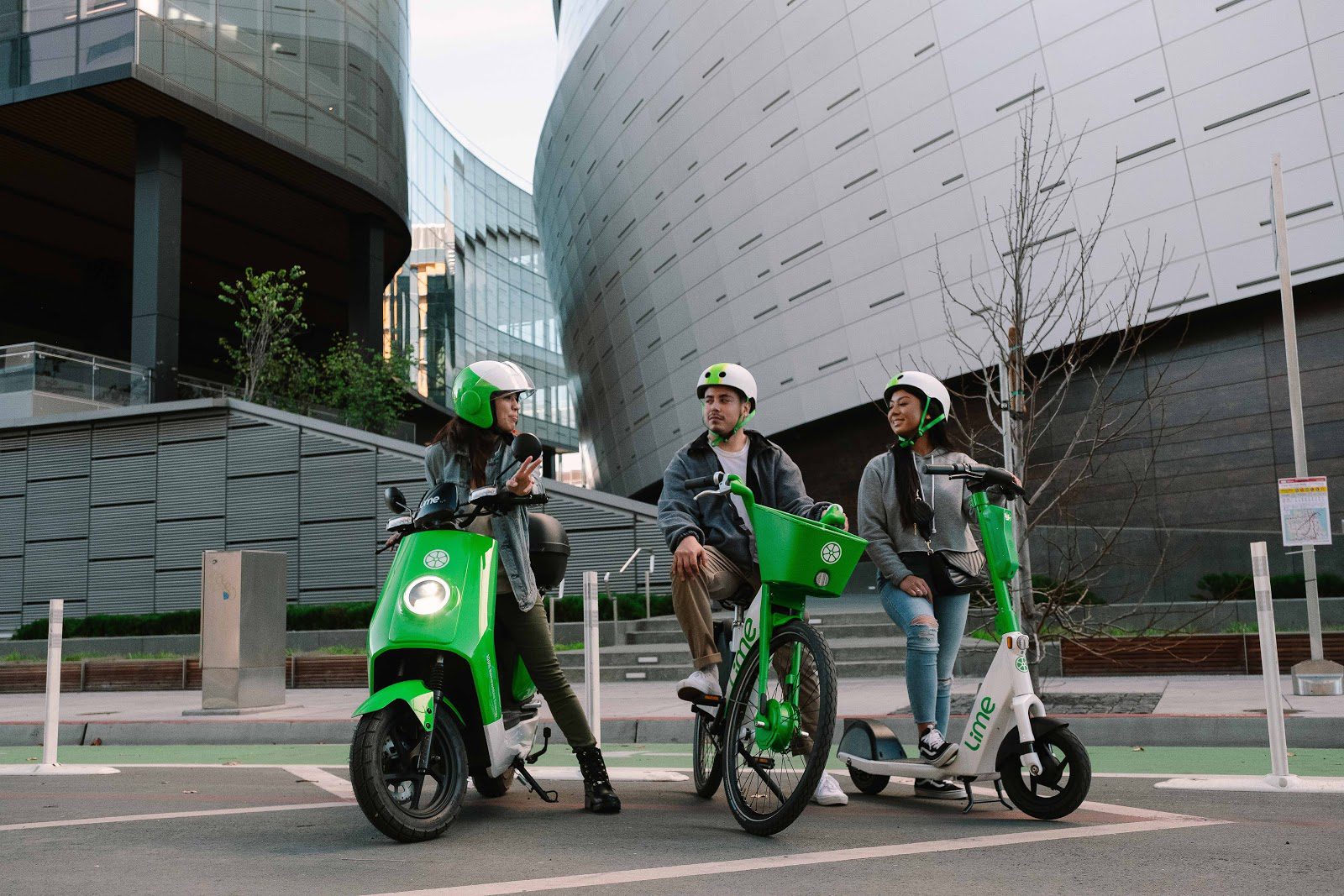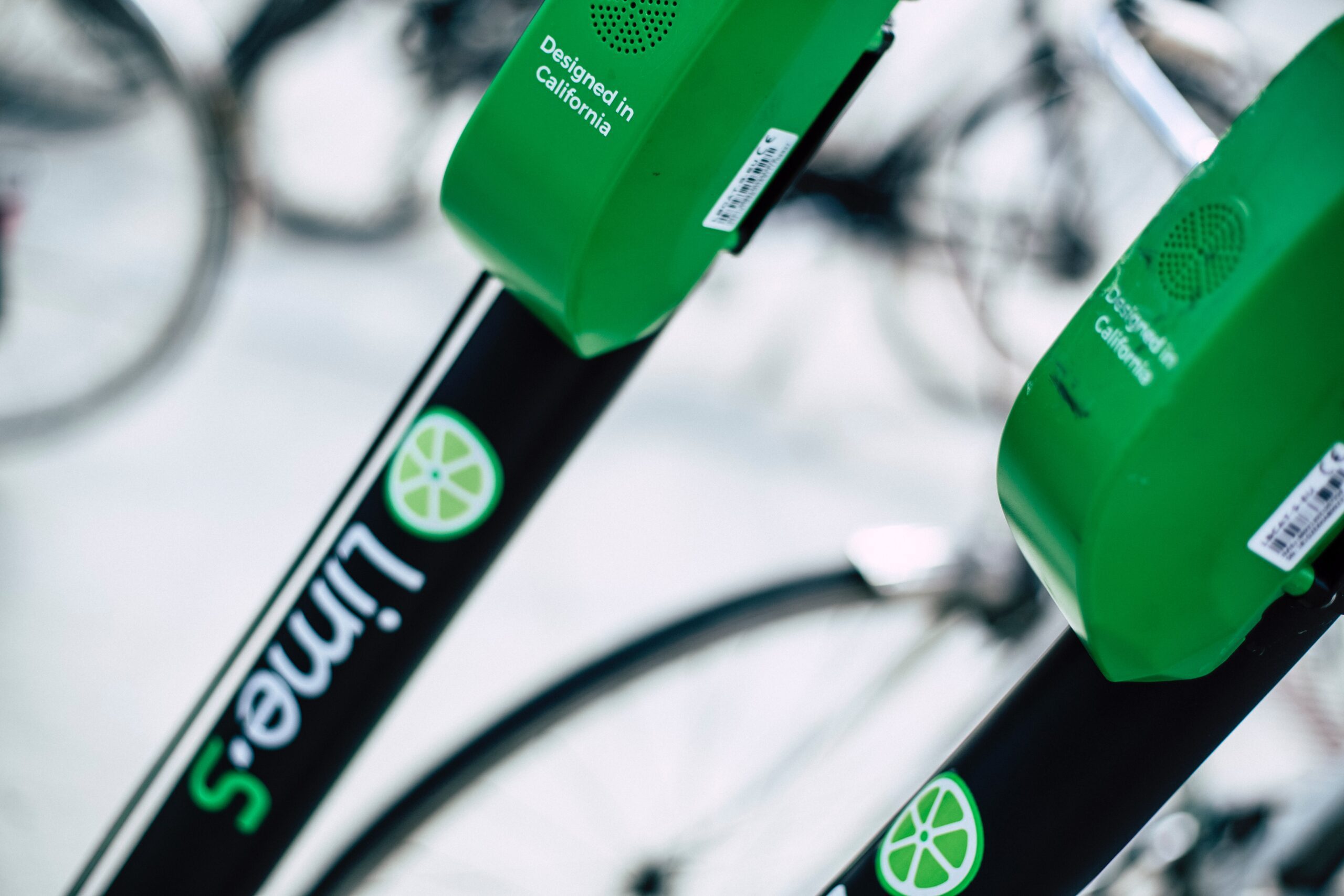This spring, Lime is introducing its third mode of e-vehicle: the moped. The San Francisco-based company is best known for its popular e-scooters and e-bikes, which makes the moped a natural addition to their line of electrified urban transportation.
Initially, Lime will roll out its new mopeds in Washington D.C. and Paris, France, with 600 mopeds planned for D.C. The company, however, aims to deliver mopeds to more U.S. cities throughout the year. To create its mopeds – lime green in color, of course – Lime turned to Niu, the world’s leading shared moped manufacturer, as well as one of the only providers of street-legal mopeds in America.

Like Lime’s scooters and bikes, the moped is a two-wheeled electric vehicle, but it offers a few special features as well. It can reach a top speed of 28 mph and can go up to 87 miles on a single charge, which exceeds the capacities of both e-scooters and e-bikes, and it also seats two people, while e-scooters and e-bikes are made just for a single person. The moped is equipped with a handy storage space that Micah Toll of Electrek called “one of the biggest benefits of this type of vehicle.”
Despite mopeds’ long-distance ability, the micro-mobility firm sees them as providing Lime riders with another great option for far shorter trips – specifically those under six miles. This is the trip length, as revealed in a US Office of Energy Efficiency & Renewable Energy report, that accounts for nearly 60 percent of all car trips in America, the United Kingdom, and other large countries. By offering alternatives for gas-fueled cars, Lime is taking “another major step in our goal of ensuring access to affordable, carbon-free shared transportation in cities around the world,” states Lime CEO Wayne Ting, adding “we’re excited to help cities and riders get moving again with safe, sustainable, and socially-distant transportation to serve any urban journey.”
Additionally, Lime’s own research has shown that over three-quarters of its riders reduced their use of cars, taxis, and ride-sharing due to the company having e-vehicle options. To make things particularly easy for customers, Lime will have all three of its transportations modes on its app. “For us, it’s really about having a platform that’s available for all these trips, and then we want to be able to provide optionality that makes sense for the riders,” Sean Arroyo, Lime’s head of new mobility, explained to TechCrunch.
Lime’s line of micro-mobile vehicles provides convenient transportation for its riders while also positively impacting communities. E-scooters, for example, are more energy-efficient to manufacture and use than gas-powered cars, as well as being more capital efficient.
“These ‘microbility’ services have the potential to solve some of the biggest problems confronting urban and suburban communities,” researcher/designer Lassor Feasley and Levi Tillemann (a former advisor to the U.S. Energy Department during the Obama Administration) assert in a piece for Wired. “They can expand access to public transportation, reduce our environmental footprint, and save us money. Micromobility can be just as transformational as solar power or electric vehicles – with impacts that will be felt much sooner.” Because they are more carbon-free than fossil-fueled cars, Lime’s e-vehicles also will help to cut down on the 1,556 megatons of greenhouse gas emissions that road transit causes in the US alone.
Where moped use has raised some concerns is in the area of safety. The moped-sharing firm Revel encountered controversy due to crashes involving their e-vehicles. In light of problems that other firms have experienced, Lime has developed an extensive safety program, which is a distinguishing feature of this moped.
Before even starting their ride, a Lime customer must complete a multi-chapter rider safety course that the company created with the Motorcycle Safety Foundation. An MSF-designed step-by-step practice guide will be made available as will free 45-min, in-person lessons for riders who want to learn more about moped driving and riding. Additionally, prospective riders must have a valid driver’s license (although not a motorcycle license) and be at least 21 years old in order to rent a moped.
To help ensure that people wear their helmets, Lime has devised a system of three separate pre-ride checkpoints. A first-of-its-kind infrared sensor is located in the helmet compartment, so there is evidence that the helmet was removed. Furthermore, riders must take a selfie of themselves to show that they are wearing the helmet, and click on a confirmation prompt in the Lime app that they are wearing the helmet. The company also pledges to take “strict enforcement measures for repeat safety violators, including removal from the platform to avoid putting themselves and other road users at risk.”
You could say that the future looks green for Lime. The arrival of mopeds not only represents Lime’s growing family of eco-friendly vehicles but their growth in the marketplace as well. Helping to power Lime’s fiscal success is the company’s integration into three highly popular international urban transportation apps (Google Maps, Uber, and CityManager) which taps into a potential customer base of hundreds of millions of people who don’t typically use micro mobile vehicles.
Lime’s Sean Arroyo predicted that “this year you’re gonna see us really expand, not just with modes, but optionality. For us, it’s really about having a platform that’s available for all these trips, and then we want to be able to provide optionality that makes sense for the riders…and throughout 2021, I think you’re gonna see us offer quite a few different options as our modes expand.” Towards this goal, Lime announced in early March that they will spend $50 million to quadruple their e-bike fleet and bring their e-bikes into 50 cities worldwide.





